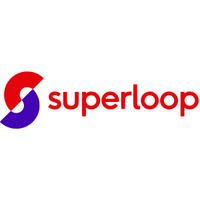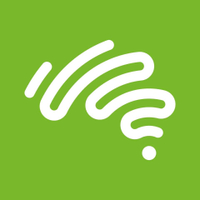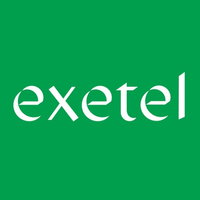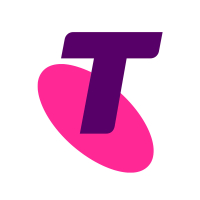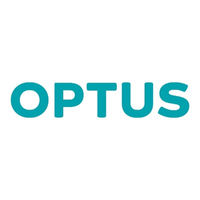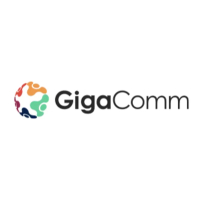Seeking out the best internet plans for gaming in Australia is becoming more and more important – and equally difficult. Whether you’re a PC gamer or you’re invested in either the PlayStation or Xbox ecosystem and you so much as dabble in online play, the demand for a fast and stable NBN (or other broadband) connection is paramount.
Factors that can influence your overall online gaming experience include:
- Latency (ping)
- Download speed
- The NBN connection type you have
- Data caps
Ultimately, the internet plan you have, where you live in Australia (and in relation to your local exchange) and the internet service provider (ISP) you’re with can all affect your online gaming experience. We therefore recommend that you shop around to find a plan and provider that best fits your needs. Fortunately, the majority of ISPs offer no lock-in contracts, so you’re relatively free to chop and change providers as you see fit.
In theory, if you have the NBN equipment already installed at your address, the process of switching NBN providers should be relatively easy and can usually be processed in less than a day.
We’ve conducted a deep dive into the current state of NBN plans in relation to gaming, using data published by the Australian Competition and Consumer Commission, along with community feedback and other performance metrics (explained below), to come up with these recommendations.
Best NBN plans for gaming: our picks
Why you can trust Tom's Guide Our writers and editors spend hours analyzing and reviewing products, services, and apps to help find what's best for you. Find out more about how we test, analyze, and rate.
Are there any other providers favoured by gamers?
Aussie Broadband is the only NBN provider in Australia that offers dedicated gaming plans, following MyRepublic’s exit from Australia, and Optus getting rid of its Gamer Plan (which was only announced in 2021).
But some NBN providers do still have gamers in mind, by offering specific tools that can theoretically help improve your online gaming experience.
Telstra, for example, offers a couple of options that claim to improve your internet connection when it comes to gaming.
The first is a free Internet Optimiser service that it says can help to reduce lag by letting you prioritise traffic to your gaming devices, and selecting which servers in which countries you can connect to.
The second is a dedicated Game Optimiser service that costs AU$10p/m. Signing up for Game Optimiser will switch on the DumaOS network management software that’s built into your Telstra router, which provides a range of features designed to prioritise and optimise online gaming traffic.
For example, you’re presented with server presets for a selection of popular online games and you can view ping speeds of various servers, both locally and overseas, to determine which is going to be best for you. It’s a service that hardcore gamers could find useful, but if you just play online casually, the free Internet Optimiser service may suffice.
Fair warning too: if you already have a Netgear or Netduma gaming router with DumaOS, then you’ll be able to access the same features without having to pay a subscription fee to Telstra.
Best NBN plan for gamers who want more speed
If you’re a serious online gamer who wants to be able to download new games and patches more quickly, then it’s definitely worth considering stepping up from our NBN 100 recommendations to an NBN 250 plan.
Since we first published this article in April 2023, a couple more providers have improved their typical evening speed on this tier, and now advertise the full 250Mbps download speeds. Previously it was just Telstra and Southern Phone that quoted it, but Aussie Broadband and Origin have since joined the group, and Superloop also now advertises 240Mbps speeds.
Best gaming NBN plan if money is no object
If you take your gaming super seriously and you’re prepared to pay top dollar for the fastest possible NBN connection, then only an NBN 1000 (aka Gigabit or ‘Ultrafast’) plan will do. While no NBN provider currently advertises the maximum 1Gbps download speeds this tier can theoretically deliver, many do offer in excess of 500Mbps, even during the busier evening hours.
A faster download speed doesn’t necessarily mean decreased latency, but an Ultrafast plan can certainly help to supercharge your game downloads and should ensure that there’s less interference to games from other household internet users.
Best NBN alternatives for gaming
If your premises can't be connected to the NBN via fixed-line connection — or you only have access to a fibre-to-the-node (FTTN) connection that limits your download speeds to an absolute maximum of 100Mbps and is susceptible to increased latency — you do still have options to get yourself online.
These include 5G home internet and NBN alternatives such as Opticomm and GigaComm.
5G home internet for gaming
5G home internet plans use, you guessed it, 5G mobile signals. 5G has the potential to offer crazy fast internet speeds up to 1,000Mbps. Currently, however, the fastest claimed typical evening speed of a 5G home internet plan is that of Telstra, with a figure of 378Mbps. Lightning fast speeds can only be achieved by people who live in areas with exceptional 5G coverage, however. And, just because your area has 5G phone coverage doesn’t mean it will have home-internet coverage too
But, while this can be great for game downloads, as we know, latency is a key figure when it comes to real time online play.
Because of the inherent wireless nature of the technology involved, 5G home internet will have a higher latency than a fixed-line NBN connection. Factors that can affect your network performance include interference of the signal from the transmission tower to your home, the distance between the tower and your home, and general strength of network coverage.
A good proportion of 5G home internet plans also come with either capped speed limits – usually 50Mbps and 100Mbps – and occasionally capped data limits, which make them a bad choice for gamers, who are some of the biggest downloaders thanks to the large size of games and game updates.
It’s with these factors in mind that we feel a 5G home internet plan probably isn’t the best option for those who take their gaming seriously. If you’re a more casual gamer who only plays online occasionally, however, then it’s an option you could certainly investigate and trial. To help guide you, we’ve picked out the following 5G home internet plan from Optus as our top recommendation.
The main downside to an Optus 5G home internet plan lies in the company’s network coverage. Optus does provide a 5G coverage map which can give you some indication as to whether 5G home internet is available in your area.
However, we’ve tried it ourselves and have found a couple of discrepancies. Firstly, it says the home address of this writer doesn’t have any 5G coverage (both mobile and home), but I do actually achieve good 5G signal (and download speeds) on my phone connected to the Optus network at home.
We then tried another home address about five minutes down the road from our home. This time the coverage map said “5G Internet may be here. To use it, you’ll need an Optus 5G modem.” But when we tried to sign up to a home 5G plan using this address, we were told it wasn’t available in our area.
The Tom’s Guide office in central Sydney, meanwhile, was able to sign up for a 5G home internet plan without issue. We haven’t been able to find any recent information regarding Optus’ overall 5G network coverage, other than it was claimed 1.2 million homes in Australia could sign up to service as of November 2021.
Yomojo is the only other provider to offer a completely uncapped 5G home internet plan, possibly because it uses the Optus 5G network. However, a Yomojo plan is more expensive than Optus’, and moreover it also asks you to pay AU$820 upfront for the same Nokia 5G modem. The maximum cost of the modem with Optus is AU$576.
Private telcos

If you currently game online on an NBN connection but find you suffer from lag or drop outs, then you may want to find out if you can access the fibre network of a private telecommunications provider such as GigaComm.
GigaComm claims low latency of 2-4 milliseconds on its fibre network, making it a genuinely viable NBN alternative for gamers if true. GigaComm says it’s able to achieve these low speeds because it uses its own infrastructure, which employs a combination of fibre optic and fixed-wireless solutions. Whether you’re in a home or an apartment building, GigaComm will either install a wireless antenna on the roof (for homes), or use existing copper cabling and implement G.Fast technology (in apartment buildings) which allows it to deliver up to 1,000Mbps speeds. In both cases, you will physically connect in the usual way of plugging a router into a wall outlet.
The only caveat with GigaComm lies with its accessibility. Currently, GigaComm is limited to certain areas in Sydney and Melbourne, and it’s most likely to be found in new-build developments (both houses and apartment blocks).
We've picked out two GigaComm plans — one for apartments and one for houses — both of which offer the fastest gigabit speeds. We've also selected the 24 month contract option, as this makes the install cost completely free. You can select either a 12 month contract or a month to month contract, but this will see the install cost increase up to a maximum of AU$1,500.
You can check to see if GigaComm services are available in your area and/or building on the company’s website. You will need to select a plan first and then you will be presented with a box that you can type your address into, to see if GigaComm is in your area.
If it is available, the company aims to have you connected within two weeks. If services aren’t available but there are plans to roll-out in your suburb, then you can get connected, but it will just take a bit longer. If GigaComm isn’t available and there are currently no plans for a roll-out, the company says you can register your interest and you’ll be told as soon as services are available.
Choosing an internet plan for gaming: what to look for

Choosing the best internet plan for gaming in your household is no walk in the park. A huge range of variables can affect the performance of your connection, and just because your friends or family may have a good experience with a certain ISP, doesn’t necessarily mean you’re going to as well.
Accessibility: We chose the NBN 100 speed tier for our best recommended plans at the start of this guide for a variety of reasons. Firstly, they are the fastest and most accessible plans available to all gamers with a fixed-line NBN connection in Australia. That’s because NBN 100 plans are compatible with all connection types – although admittedly, connection technology still does make a difference and ACCC reports consistently show that, in most cases, there’s a measurable difference in performance between a fibre-to-the-node (FTTN) and an FTTP connection on an NBN 100 plan. FTTN connections are rarely able to achieve that very top 100Mbps speed, for example.
Speed: And speaking of that speed, we also feel that 100Mbps downloads should be adequate for the majority of gamers. Sure, you won’t be able to download a large game in the blink of an eye, but waiting 2 or 3 hours for a download to complete is something we think most people are perfectly happy to do…
Price: …especially when you factor in the cost of NBN plans. NBN 100 plans are, on average, AU$300 cheaper than NBN 250 plans and AU$550 cheaper than NBN 1000 plans over a 12 month period. For us then, this combination of speed, value and accessibility makes it our choice for the overall best NBN plan for gaming for most people.
Gaming internet FAQ
As we touched upon in the introduction to this guide, other factors that can affect your online gaming experience include, ping, download speed, connection type and data caps. But exactly what role do these play?
What are ping and latency, and why are they important for gaming?
Ping is a networking term that relates to the time it takes for data to be sent from its source to its destination. Latency is the term used to measure the time for that data to make a round trip back to the source. While they are technically different terms, they now tend to be used interchangeably.
In gaming terms, both these metrics can affect the response time of the action you see on screen. When you press a button or move a joystick, you want the associated action to take place instantaneously. If the ping speed of your NBN connection is high – it’s measured in milliseconds – then your games are going to be less responsive.
It also affects online gameplay. If your connection suffers from high latency (lag), then your in-game avatar’s actions in game can be delayed and slower compared to others on connections with lower latency.
Your connection type and the ISP you’re signed up with will play the biggest role in determining the ping speed and latency of your connection. The download speed of your NBN plan can also play a small factor (particularly if the connection is being used to near its maximum capacity), but the Australian Competition & Consumer Commission did say in its most recent report that “higher bandwidth/speed does not guarantee lower latency under load.”
Your router can also play a large role, with even the ACCC chiming in that “...the model and the configuration of the router can have a significant effect on the extent to which latency deteriorates under load.”
Therefore, investing in one of the best gaming routers could be one additional change that could help alleviate ping-related troubles.
Is there a ‘best’ NBN connection type for gaming?
The physical connection type at your address also has an effect on the speeds you can achieve. With regard to fixed-line NBN, FTTP connections are the ‘best’ type because they use fibre-optic cabling the entire way from the point of distribution to your home. This means data can be sent incredibly quickly compared to other connection types, which use varying amounts of legacy copper or coaxial wiring in their infrastructure.
In theory then, FTTP connections are going to have lower latency than other NBN connections. However in reality and based on community feedback, the difference in speed will be determined by a number of factors, and so you could find that the ping of one FTTP connection is about the same as the ping on a copper-based FTTN connection.
It will ultimately come down to where you live in Australia, where the server you’re trying to reach is located and how many hops (the routers and other systems the data signal has to travel through) your request has to make.
How does download speed affect gaming?
It’s not just online gaming that can be affected by a poor NBN connection. Big-name games for PC, PlayStation and Xbox often require huge downloads (many AAA-games are now over 100GB) before you can play them. While you first need to make sure you have enough storage space on your console to store the downloads, ideally you’re also going to want a fast NBN connection to ensure your games download as quickly as possible.
The best NBN plans to ensure fast game downloads, then, are going to be NBN 250 and NBN 1000. These only work on fibre-to-the-premises (FTTP) and some hybrid fibre coaxial (HFC) connections, so if you connect to the NBN with any other connection type, then the best you can expect to get is an NBN 100 plan.
How else can I improve my internet speed?
1. Connect via Ethernet: The first is to connect your gaming devices to your router via an Ethernet cable. Wi-Fi may have undergone improvements in recent years, especially with the introduction of Wi-Fi 6, but creating a physical connection using an Ethernet cable is going to offer the best chance of remaining constantly connected and achieving the lowest possible latency.
2. Upgrade to a gaming-grade router: The best gaming routers offer more customisation compared to standard consumer routers. This allows you to finetune your internet connection to ensure your gaming device(s) get network priority over others in your home.
3. Seek out local gaming servers: As we’ve touched upon several times in this article, ping speed and latency have the greatest impact on your online gaming sessions. So, when you log on to play games online, you’ll ideally want to connect to servers as close to Australia as possible. This will help keep ping to a minimum and keep your games running smoothly.

